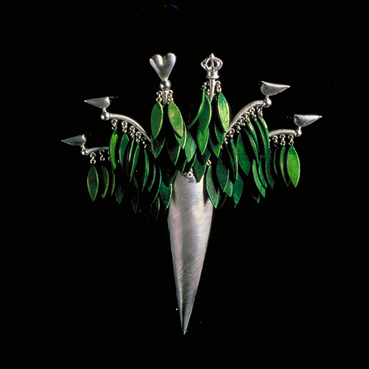Vernacular traditions in Norwegian jewelry design - Past, present, future
DOI:
https://doi.org/10.7577/formakademisk.1408Emneord (Nøkkelord):
jewelry design, Norway, vernacular traditions, globalization, identitySammendrag
Living in an era of globalization, the capability of communicating identity has become of greater importance than ever. This has increased our estimation of the vernacular, which represents an expression of a national or local identity. In Norway the vernacular tradition in silver jewelry is particularly strong. It has played an important role not only locally, but also in the constantly changing relation with the outside world, in accordance with the societal situation. It should therefore constitute a reliable indicator of how our country relates to the present process of globalization. The aim of the paper is to throw light on the relation between Norway’s role on the global scene and the use of the vernacular tradition in the development of jewelry design in general. It consists of a historical exploration that leads up to a discussion the present and future situation. Today there is a cleft between consumer behavior and avant-garde practice. In accordance with the global situation and Norway’s geopolitical situation of existing in the outskirts of political and economic decisions, the situation is characterized by a variety of practices, and by a slow acceptance of the vernacular values in the world of avant-garde practitioners.
Nedlastinger
Publisert
2015-07-13
Hvordan referere
Skjerven, A. (2015). Vernacular traditions in Norwegian jewelry design - Past, present, future. FormAkademisk, 8(1). https://doi.org/10.7577/formakademisk.1408
Utgave
Seksjon
Artikler
Lisens
- Forfatteren(e) beholder sin opphavs- og kopieringsrett til eget manuskript, men gir tidsskriftet varig rett til 1) å fremføre manuskriptet for offentligheten i den opprinnelig publiserte digitale form, og 2) å registreres og siteres som første publisering av manuskriptet.
- Forfatteren må selv forvalte sine økonomiske kopieringsrettigheter overfor eventuell tredjepart.
- Tidsskriftet gir ingen økonomisk eller annen kompensasjon for innsendte bidrag, medmindre det er gjort særskilt avtale om dette med forfatteren(e).
- Tidsskriftet plikter å arkivere manuskriptet (inklusive metadata) i den opprinnelig publiserte digitale form, i minst ett dertil egnet åpent tilgjengelig langtidsarkiv for digitalt materiell, som for eksempel i de norske universitetenes institusjonsarkiv innen rammen av NORA-samarbeidet.
Verket vil bli publisert OpenAccess med en Creative Commons 4.0-lisens som tillater alle å lese, dele og tilpasse innholdet, også kommersielt, under lisensvilkårene:
Dette verket må tilskrives/ krediteres på riktig måte, en lenke må gis til CC-BY 4.0-lisensen, og endringer som er gjort må angis på en rimelig måte, men ikke på noen måte som antyder at lisensgiveren støtter deg eller din bruk.



